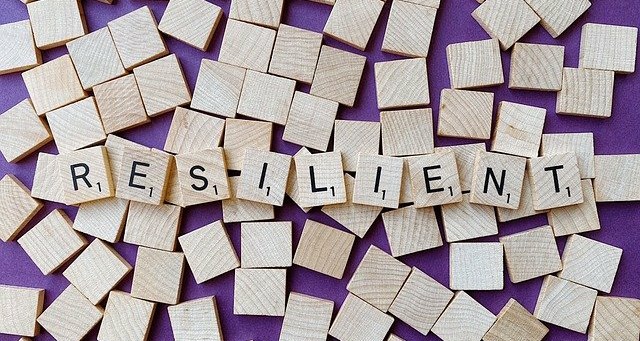Business resilience
Contents |
[edit] Introduction
In 2020 the double whammy of a coronavirus pandemic and an indeterminate prediction of the outcome of Brexit negotiations has led to a new consideration in boardrooms up and down the country. The word on directors’ lips is “resilience”.
Building resilience into an organisation requires focus in three distinct areas:
- Strategy at corporate level.
- Day-to-day operational policies.
- Workforce adaptability.
[edit] Strategy at corporate level
- Construction projects rely on supply chains. Whereas price has generally been the dominant factor, procurers should also consider the vulnerability of long supply chains and logistical reliability.
- Consider building cash reserves to tide over shortages or unexpected crises such as a pandemic rather than paying large bonuses or distributing over generous dividends.
- Carrying increased stock and spares so there is less reliance on “just in time” deliveries.
- Designing projects with a greater emphasis on using local products and labour.
[edit] Day-to-day operational policies
- This is about rapid response to changing circumstances in order to survive.
- Pubs turning into takeaways and the motor industry producing ventilators in response to the coronavirus pandemic were examples of agile management thinking on its feet.
- The incredible speed with which the Nightingale hospitals were established shows what an industry can achieve when it has a rapid response mindset.
- Carry out management exercises in scenario planning for different potential situations that could arise; such as power cuts, terrorist attacks, natural disasters, changes in legislation, industrial action, supply chain disruption, pandemics and so on.
[edit] Workforce adaptability
- Reliance on one key individual is risky and shadow working is desirable.
- The ability of a business to have a workforce that can continue to function by remote working has proved to be life saving for some companies during national lock downs.
- The construction industry has had to adapt its practices to social distancing to stop the spread of COVID-19. This entails detailed planning of overlapping trades and installation to avoid proximity clashes.
There is every chance that 2020 will be seen as disastrous, but the subsequent recovery will kick start a number of innovations and changes to working practices. Artificial Intelligence, the internet of things and smart buildings are likely to feature in technical advancement but the coronavirus pandemic has shown up a number of weaknesses that will need addressing and moreover it has caused people to re-evaluate their lifestyle. This will force cultural change to the working environment. Shorter working hours, improved productivity through technology and a greater respect for the environment could herald a new dawn. It is an opportunity to reset the clock.
[edit] Related articles on Designing Buildings Wiki
- Adaptability.
- BREEAM Adaptation to climate change.
- BREEAM Designing for durability and resilience.
- Building back better with BREEAM.
- Building Back Better: Resilience
- Building flood resilience.
- Coronavirus.
- Design flexibility.
- Designing resilient cities: a guide to good practice (EP 103).
- Engineering resilience to human threats.
- Future proofing construction.
- Managing and responding to disaster.
- Pressing pause to avoid errors.
- Property flood resilience.
- Resilience.
- Re-evaluating the design life of buildings.
- Two steps towards a more resilient world.
Featured articles and news
Government consultations for the summer of 2025
A year of Labour, past and present consultations on the environment, the built environment, training and tax.
CMA competitiveness probe of major housing developers
100 million affordable housing contributions committed with further consultation published.
Homes England supports Greencore Homes
42 new build affordable sustainable homes in Oxfordshire.
Zero carbon social housing: unlocking brownfield potential
Seven ZEDpod strategies for brownfield housing success.
CIOB report; a blueprint for SDGs and the built environment
Pairing the Sustainable Development Goals with projects.
Types, tests, standards and fires relating to external cladding
Brief descriptions with an extensive list of fires for review.
Latest Build UK Building Safety Regime explainer published
Key elements in one short, now updated document.
UKGBC launch the UK Climate Resilience Roadmap
First guidance of its kind on direct climate impacts for the built environment and how it can adapt.
CLC Health, Safety and Wellbeing Strategy 2025
Launched by the Minister for Industry to look at fatalities on site, improving mental health and other issues.
One of the most impressive Victorian architects. Book review.
Common Assessment Standard now with building safety
New CAS update now includes mandatory building safety questions.
RTPI leader to become new CIOB Chief Executive Officer
Dr Victoria Hills MRTPI, FICE to take over after Caroline Gumble’s departure.
Social and affordable housing, a long term plan for delivery
The “Delivering a Decade of Renewal for Social and Affordable Housing” strategy sets out future path.
A change to adoptive architecture
Effects of global weather warming on architectural detailing, material choice and human interaction.
The proposed publicly owned and backed subsidiary of Homes England, to facilitate new homes.
How big is the problem and what can we do to mitigate the effects?
Overheating guidance and tools for building designers
A number of cool guides to help with the heat.
The UK's Modern Industrial Strategy: A 10 year plan
Previous consultation criticism, current key elements and general support with some persisting reservations.
Building Safety Regulator reforms
New roles, new staff and a new fast track service pave the way for a single construction regulator.

























